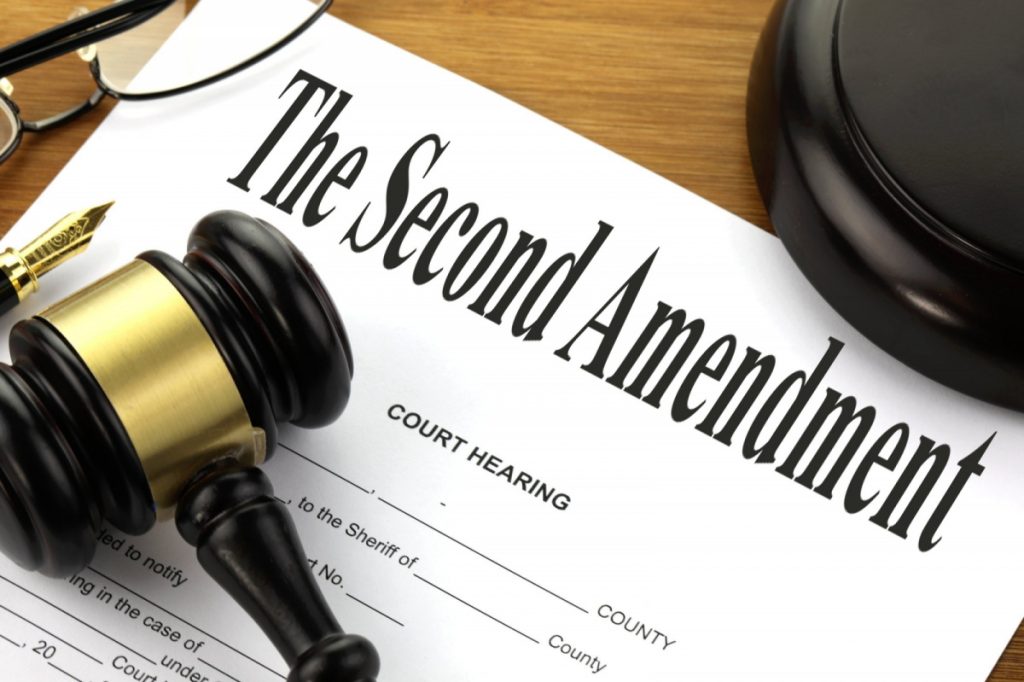
Image Credit: The second amendment by Nick Youngson CC BY-SA 3.0 Pix4free
By Saul Roth
In Georgia, another case was decided in 1846. It was a challenge to the 1837 law that said that citizens could not have arms on their person. Because Georgia did not have a right –to- arms clause in their state Constitution, the case was decided on the Second Amendment. The Georgia Supreme Court decided it was the right of every citizen to keep and bear arms. This case that was settled before the Fourteenth Amendment, and the state thus used the Second Amendment to make its decision. (Oshea, 2012)
The first decision by the Supreme Court that showed the view of the Court had nothing to do with the carrying or bearing of arms. In the Dred Scott decision in (1857) a slave owner received his “property” (the slave) back because the slave was not a citizen. In its decision the Court went on to write about the rights that citizens enjoyed that blacks did not. One of these rights was to keep and carry arms wherever the whites went. (O’Shea,2012).
There were some state court decisions during this period that did defend the militia opinion of the second amendment. In the Tennessee Supreme Court’s Aymette decision that court opinioned that citizens could only keep arms needed for the common defense, such as muskets and swords. Knives, canes, words, and handguns were prohibited. There was the State v. Huntley case in North Carolina in (1843). In this case, Huntley carried a double gauge shotgun on his back and was making death threats. The Court stated the North Carolina Constitution allowed citizens to bear arms for the defense of the state. The Court stated that men might carry a gun for business or amusement, but made no mention of self-defense. (O’Shea, 2012)
The Civil War was fought to decide the question of slavery and States’ rights. The 14th Amendment to the Constitution was ratified, so the 13th Amendment would apply to the states. Unfortunately, the Supreme Court misinterpreted the Constitution on several occasions. In the Slaughterhouse case, all butchers were moved south and outside the city of New Orleans. The court found this case was a good indication of the police powers of the state. But the Court went further to show that state laws could abridge or expand national laws. The Court opinioned that the 14th Amendment was a just addition to the Constitution in order to enforce the 13th Amendment. Because of this interpretation, each state’s decisions on gun laws would be supreme. This legal process is why we are just deciding now about gun control on a national level. (Huhn, 2009)
The Post -Bellum era saw a shift in the opinions of the state courts moving toward more restrictions on the carrying of weapons. This change was especially true in the South, and many Southern state Constitutions were amended to restrict gun possession. In Tennessee’s Andrews v State in 1871, there was a decision in a challenge against a law that only allowed only police officers and travelers to carry guns. The Court decided that the right to bear arms was primarily for military readiness, so the state could regulate possession rights, and citizens could carry arms as well as the militia. The reason for citizens to carry arms was so they could practice and be ready for militia duty if it was needed.
In 1874, Georgia passed a law stating that persons could only carry an unloaded gun outside the home. This law also related possession to militia readiness. In Arkansas in 1882, a law was passed stating the only handgun allowed would be an Army pistol, and it would have to be held in the person’s hand and kept uncovered. This law was so impractical it could only be used in a militia setting. The law did state that possession was only for military use, not self-defense. Similar laws were passed in other states including Texas, Florida, and Oklahoma. (O’Shea, 2012)

Recent Comments